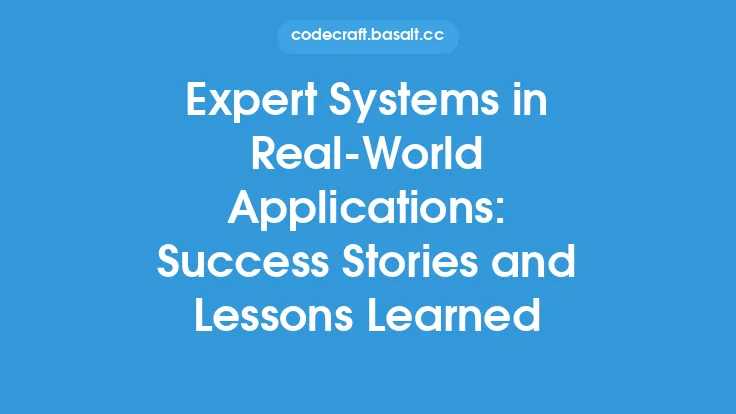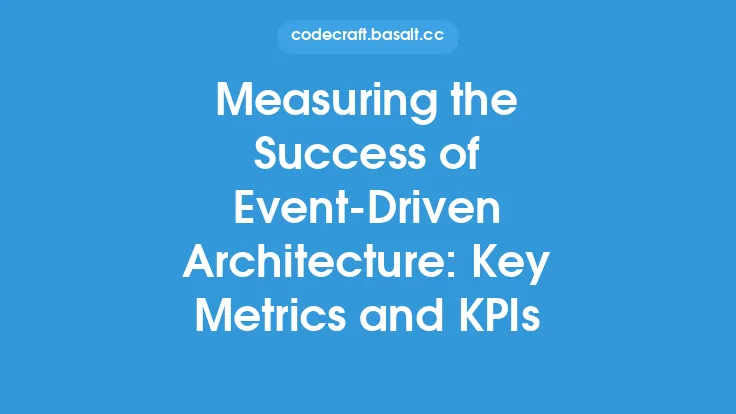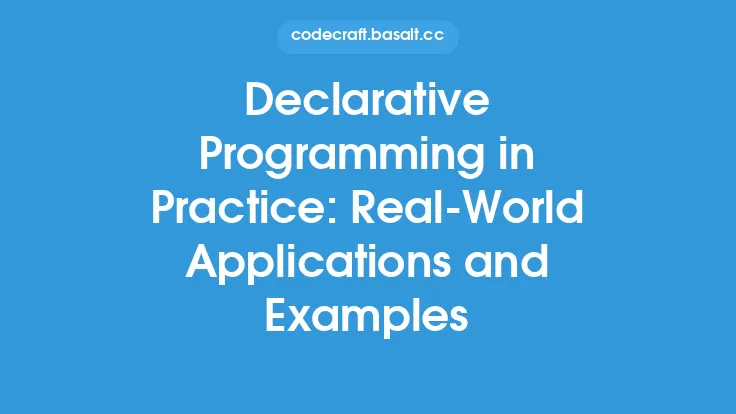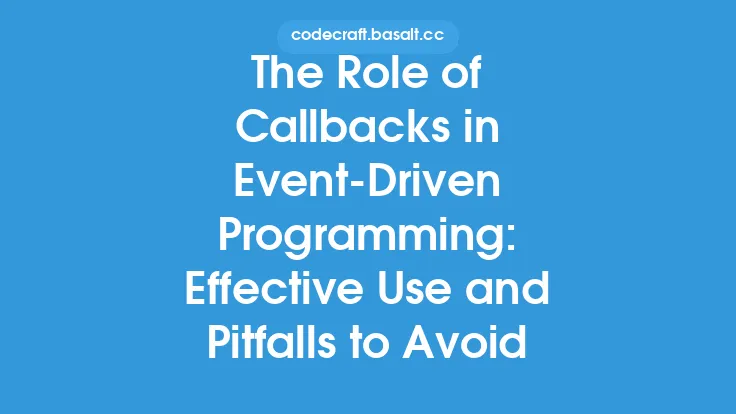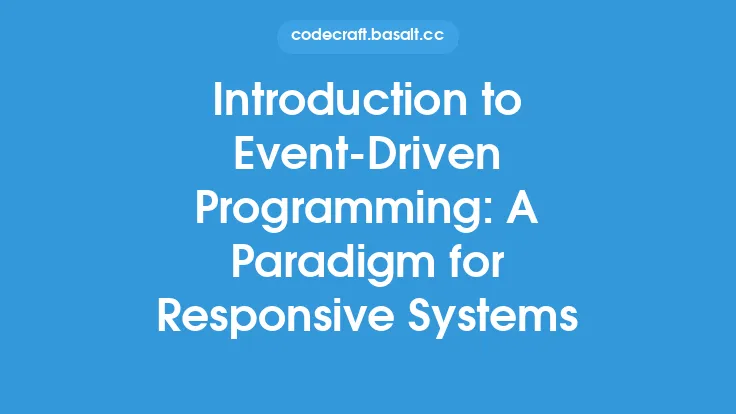Event-driven programming has become a staple in modern software development, and its applications can be seen in various industries and domains. This paradigm has enabled developers to create responsive, scalable, and maintainable systems that can handle complex tasks and high volumes of data. In this article, we will explore real-world applications of event-driven programming, highlighting success stories and lessons learned from various projects and industries.
Introduction to Event-Driven Programming in Real-World Scenarios
Event-driven programming is a paradigm that revolves around producing, processing, and reacting to events. These events can be anything from user interactions, network requests, or changes in the system's state. By leveraging event-driven programming, developers can create systems that are highly responsive, efficient, and adaptable to changing requirements. In real-world scenarios, event-driven programming has been successfully applied in various domains, including web development, mobile app development, gaming, and IoT (Internet of Things) development.
Success Stories in Web Development
In web development, event-driven programming has been instrumental in creating responsive and interactive web applications. For instance, frameworks like React and Angular use event-driven programming to handle user interactions, such as clicks, scrolls, and keyboard input. These frameworks provide a robust set of tools and APIs that enable developers to create complex web applications that can handle a high volume of user interactions. A notable example of a successful web application built using event-driven programming is Facebook. Facebook's web application is built using React, which provides a highly responsive and interactive user experience.
Applications in Mobile App Development
In mobile app development, event-driven programming has been used to create interactive and engaging mobile applications. For example, mobile apps like Instagram and Twitter use event-driven programming to handle user interactions, such as likes, comments, and shares. These apps provide a seamless and responsive user experience, even in the presence of high latency or network congestion. A notable example of a successful mobile app built using event-driven programming is Pokémon Go. Pokémon Go uses event-driven programming to handle user interactions, such as catching Pokémon, battling, and interacting with other players.
Event-Driven Programming in Gaming
In the gaming industry, event-driven programming has been used to create immersive and interactive gaming experiences. For instance, games like World of Warcraft and League of Legends use event-driven programming to handle user interactions, such as character movements, attacks, and spells. These games provide a highly responsive and interactive gaming experience, even in the presence of high latency or network congestion. A notable example of a successful game built using event-driven programming is Fortnite. Fortnite uses event-driven programming to handle user interactions, such as building, shooting, and interacting with other players.
IoT Development and Event-Driven Programming
In IoT development, event-driven programming has been used to create smart and connected devices that can interact with their environment. For example, smart home devices like Amazon Echo and Google Home use event-driven programming to handle voice commands, sensor data, and other events. These devices provide a seamless and responsive user experience, even in the presence of high latency or network congestion. A notable example of a successful IoT device built using event-driven programming is the Nest thermostat. The Nest thermostat uses event-driven programming to handle sensor data, user interactions, and other events to provide a smart and connected home experience.
Lessons Learned from Real-World Applications
While event-driven programming has been successfully applied in various domains, there are several lessons that can be learned from real-world applications. One of the key lessons is the importance of proper event handling and management. In event-driven systems, events can be generated at a high rate, and proper handling and management of these events are crucial to prevent system overload and ensure responsiveness. Another lesson is the importance of decoupling components and services in event-driven systems. Decoupling components and services enables developers to create scalable and maintainable systems that can handle complex tasks and high volumes of data.
Best Practices for Implementing Event-Driven Programming
To implement event-driven programming successfully, there are several best practices that developers can follow. One of the key best practices is to use a robust event-driven framework or library that provides a set of tools and APIs for handling events. Another best practice is to decouple components and services to create scalable and maintainable systems. Additionally, developers should use proper event handling and management techniques to prevent system overload and ensure responsiveness. Finally, developers should use monitoring and logging tools to track system performance and identify potential issues.
Conclusion
In conclusion, event-driven programming has been successfully applied in various domains, including web development, mobile app development, gaming, and IoT development. By leveraging event-driven programming, developers can create responsive, scalable, and maintainable systems that can handle complex tasks and high volumes of data. However, there are several lessons that can be learned from real-world applications, including the importance of proper event handling and management, decoupling components and services, and using robust event-driven frameworks and libraries. By following best practices and using event-driven programming effectively, developers can create highly responsive and interactive systems that provide a seamless user experience.
